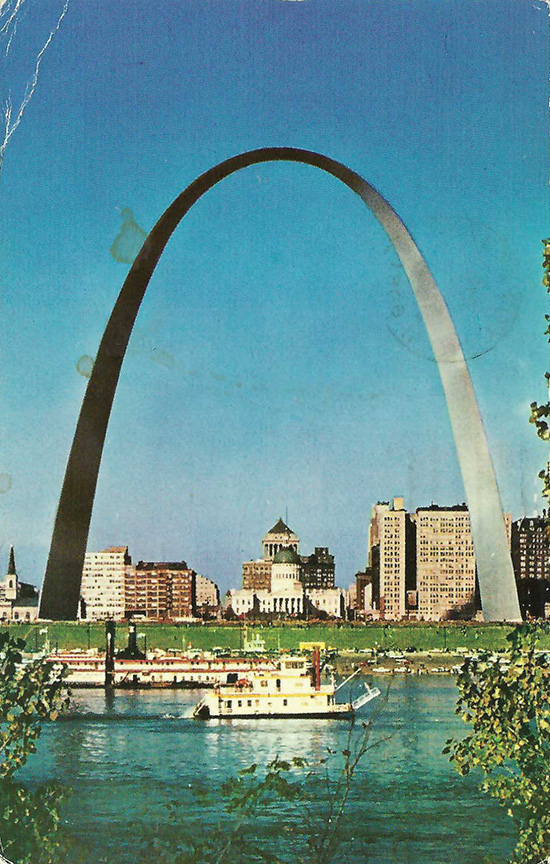
Michael Bushnell
Publisher
Gateway Arch National Park is a roughly 91-acre national park located on the original site of what were some of St. Louis’s oldest buildings, including the Old Rock House, the home of fur trader Manuel Lisa that was built in 1818 (now the site of the stairs on the north side of the arch) and the circa 1819 home of St. Louis pioneer Jean Pierre Chouteau.
The arch itself was completed on October 28, 1965 as part of the Jefferson Expansion Memorial park, the brainchild of St. Louis financier Luther Ely Smith who first pitched the idea to city leaders in 1933, then to President Franklin Roosevelt in 1935.
Smith was returning via train to St. Louis after a family holiday in Indiana in 1933 when he noticed the decrepit condition of the original plat of St. Louis on the Mississippi River waterfront.
The original city footprint was the site of the Battle of St. Louis during the American Revolution, the site of the original capital of the upper Louisiana Territory following the Louisiana Purchase in 1803 and it was the site of the Three Flags Ceremony in 1804, officially turning the land over to France who then turned it over to the United States, paving the way for the Lewis and Clark expedition.
Clearing the ground of its original buildings, now over 120 years old, was a different story. Historic Preservations teamed with the St. Louis Post Dispatch to fight the purchase of the land and the razing of such historic structures along with the town’s original history. In September of 1935, voters of St. Louis had their say, approving the purchase of the park land for $7.5 million.
The Arch itself is the tallest structure in Missouri. It was designed by Finnish-American architect Eero Saarinen and structural engineer Hannskarl Bandel in 1947 and built between 1963 and October 1965. It stands 630 feet tall and 630 feet wide at its base. The legs are 54 feet wide at the base, narrowing to 17 feet at the peak of the arch. There is a tram system that carries passengers to the observation room at the top of the arch in which people can view the riverfront from narrow slit windows that overlook the park below. If you’ve ever been in the arch on a windy day, you know that just adds to the experience.
The description on the back of this Chrome era postcard published by the St. Louis Color Postcard Company reads: Gateway Arch and St. Louis Waterfront. The Jefferson National Expansion Memorial on St. Louis’s waterfront memorializes this historic area as the gateway to the west. The inspiring 630 foot stainless Gateway Arch, a focal point of the St. Louis skyline, embraces within its environs the Old Courthouse, the old Cathedral, new buildings to compliment the graceful curve and the ever active Mississippi waterfront.
The card was sent to Mr. John L. Newton of Maywood, Illinois on August 16, 1966. The message reads: “This isn’t really open yet but I was able to visit the old cathedral and courthouse this afternoon. Well worth a visit. Maybe next spring we can drive down. Got to leave hotel now to catch plane to KC. Bill.”
















